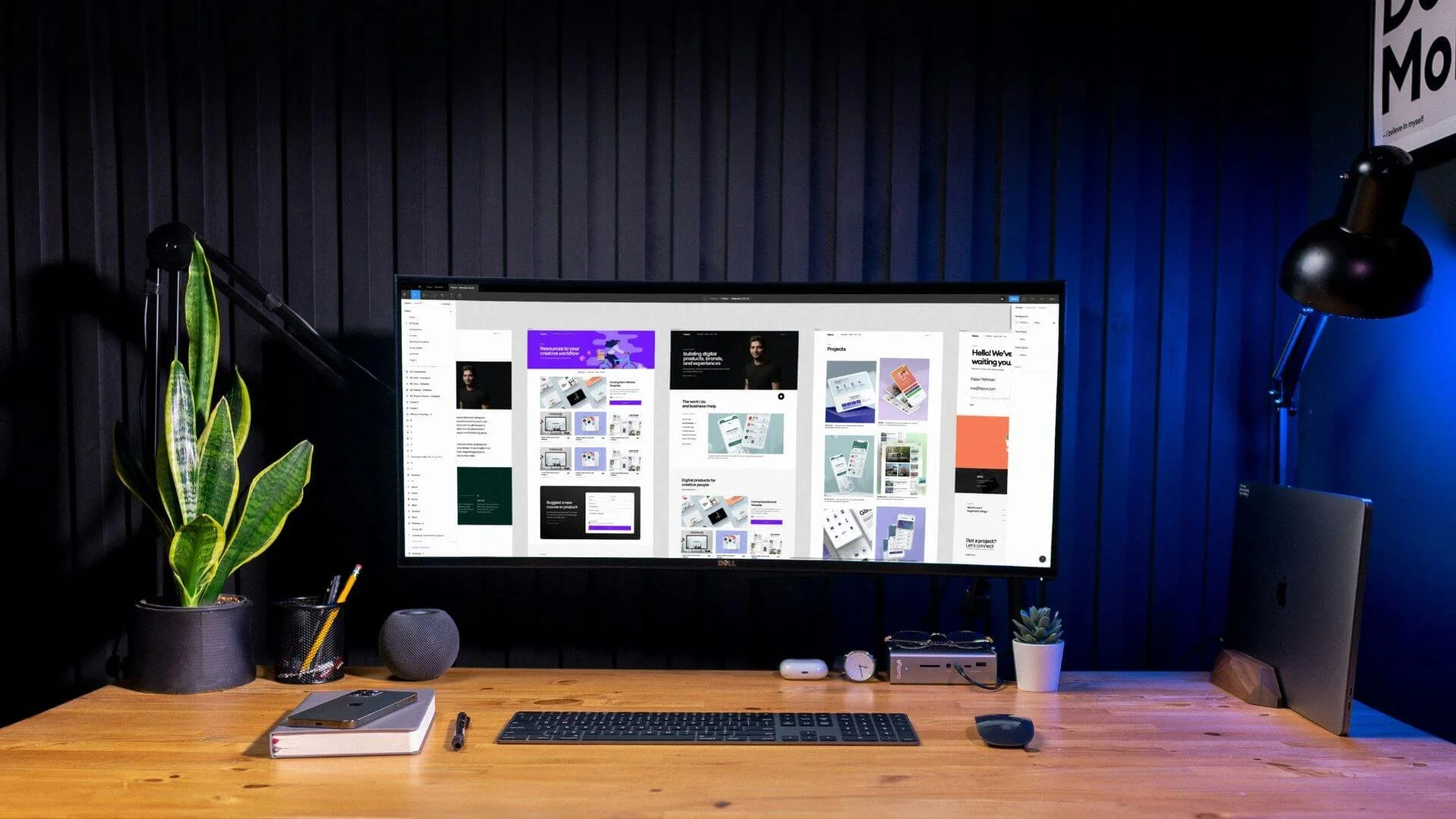Combining psychology and user experience: how your decisions are shaped online
The decisions users make while navigating a website or app often appear to be spontaneous, but in reality, they’re influenced by a range of psychological factors. And these decisions can be explained by this: behavioural economics.
It’s a field that blends psychology and economics, helping explain why people act the way they do -sometimes irrationally. In the world of UX design, understanding these principles is key to shaping experiences that guide users toward the decisions you want them to make.
So, how can we take these insights and apply them to digital experiences to drive better user decisions? And, more importantly, how can you use these principles without making your users feel manipulated?
Why behavioural economics matters in UX design
Let’s start by establishing one thing: human decision-making is often irrational. As much as we like to think we make logical decisions, cognitive biases and emotional triggers are constantly at play. That’s where behavioural economics comes in. This field combines insights from psychology and economics to help us understand how people actually behave -not just how we think they should behave.
When we talk about psychology and user experience, we’re talking about leveraging these insights to shape the user journey in ways that encourage the right actions at the right time. The goal isn’t to deceive or push users toward choices they don’t want to make, but to design digital experiences that align with how users naturally think and behave.
The core principles of behavioural economics in UX design
By understanding and leveraging biases, emotions, and social behaviours, you can guide users toward decisions that benefit both them and your business. Below are the key principles that bridge psychology and user experience.
1. Cognitive biases: understanding how we all think (and sometimes don’t)
Cognitive biases are mental shortcuts that help us make decisions quickly but often lead us to make irrational choices. Understanding these biases is key to crafting user experiences that help users make better decisions.
Anchoring: One powerful cognitive bias is the anchoring effect, where users rely heavily on the first piece of information they see. For example, if a user first encounters a high-priced item, subsequent choices seem more affordable by comparison. B2B platforms can use this by showing premium offerings first, making the standard options appear more attractive.
Framing: How information is framed can have a huge impact. In UX design, subtle tweaks in language can leverage this bias. For example, presenting a "limited-time offer" can drive users toward quicker decisions, utilising the psychological power of framing.
When harnessed responsibly, these biases help structure decisions in ways that benefit both the user and the business. By providing clear choices and framing decisions around what the user stands to gain or lose, designers can encourage more beneficial user behaviours.
2. The decoy effect: nudging users toward the best choice
The decoy effect occurs when a third, less-attractive option is added to a set of choices, making the other options appear more appealing. This principle is used extensively in marketing and UX design to guide users toward more profitable or beneficial decisions.
Presenting a less attractive option: For example, a SaaS platform might offer three pricing plans: Basic, Premium, and Deluxe. By making the Deluxe option less attractive (e.g., a higher price with fewer features), users are more likely to choose the Premium plan, which seems like the best value.
Use of comparisons: Showing side-by-side comparisons helps users evaluate options more clearly. This is particularly effective in B2B products, where complex features and pricing structures can overwhelm users. A decoy option simplifies the decision-making process by making the best choice appear more desirable.
The decoy effect works by guiding users’ choices without limiting their freedom. By structuring options thoughtfully, you can nudge users toward the choices that benefit both them and your business.
3. Loss aversion: why losing feels worse than gaining
Loss aversion is a powerful principle from behavioural economics that suggests losses loom larger than gains of the same size. In UX design, this means that users are more motivated to avoid losing something than to gain something of equal value.
Framing offers with losses: In B2B marketing, you can capitalise on loss aversion by emphasising what users stand to lose by not acting. For instance, instead of saying “Sign up today and save 20%,” you could say “Don’t miss out on 20% savings -offer ends soon!” The second framing taps into the fear of losing the opportunity.
Abandonment reminders: For users who abandon their basket or leave an onboarding process incomplete, gentle reminders about what they’re missing can increase conversion rates. A notification saying, “You left your setup incomplete -finish now to secure your 10% discount” can trigger action.
By framing decisions around potential losses rather than gains, you encourage users to act sooner to avoid missing out on valuable opportunities. However, it’s important not to mislead users as it may lead to the use of deceptive UX patterns.
4. Social proof: the influence of the crowd
Humans have an innate tendency to look to others for guidance, especially when making decisions. This psychological tendency is known as social proof -and it’s incredibly powerful when used effectively in UX design.
User testimonials and case studies: Social proof is particularly potent in B2B environments where trust is crucial. Showcasing testimonials, case studies, or success stories from clients in similar industries reassures potential customers that others have successfully used the product or service.
Community engagement: Encouraging community engagement through forums or user groups is another effective way to build trust. When users see that others are engaging with a product and getting value, they’re more likely to feel comfortable doing the same.
By leveraging the behaviour of others, you can guide users toward making decisions that feel more trustworthy and validated.
5. Scarcity and urgency: creating a sense of FOMO (Fear of Missing Out)
Humans are wired to value rare or hard-to-get items more highly. This is known as the scarcity effect, which is why time-sensitive offers or stock-limited notifications can drive decisions quickly.
Urgency indicators: By subtly introducing a sense of urgency -such as countdown timers or "only a few left" messages -users feel the need to act quickly. In a B2B context, limited-time pricing or exclusive access to features can motivate users to sign up or engage sooner rather than later.
Genuine scarcity: However, it’s important that scarcity is used authentically. Fake urgency can harm user trust and lead to feelings of manipulation. By offering genuine limited-time deals or exclusive features, companies can create authentic urgency without overstepping boundaries.
When users feel they might miss out on something valuable, they’re more likely to act -and act quickly. But remember, balance is key. Overuse of scarcity tactics can lead to frustration and pushback.
The ethical use of behavioural economics in UX design
It’s essential to apply psychology and user experience ethically in your design process. While principles like scarcity, loss aversion, and social proof can guide users toward better decisions, they must never be used to manipulate, deceive, or pressure users into choices that are not in their best interest. In B2B contexts, where long-term relationships are key, a manipulative or misleading experience can cause irreparable damage to your brand’s reputation and trustworthiness.
By using behavioural economics thoughtfully and transparently, you can create digital experiences that benefit both your users and your business, building lasting trust and loyalty. This is the ethical way to apply psychology and user experience -not to exploit cognitive biases, but to design experiences that align with human behaviour and guide users toward choices that truly serve them.
How to integrate these principles into your UX design
To effectively apply the principles of behavioural economics in UX design, it’s crucial to blend user insights with thoughtful, intuitive design choices. By grounding your approach in data and continuously testing and refining your strategies, you can create a seamless, persuasive experience that guides users toward the right decisions. Here's how to get started:
1. Use data to understand your users
Before you start implementing these behavioural principles, you need to understand your users. What are their goals? What frustrates them? What motivates them? Use user research, analytics, and A/B testing to gather data on how your audience behaves, which will help you make informed design decisions. By integrating psychology and user experience into your research process, you’ll be able to create a design that speaks to your users’ needs and motivations.
2. Design for clarity and ease of decision-making
When applying behavioural economics in UX design, make sure your design choices are intuitive. Your users should never feel overwhelmed or confused by too many options or complicated navigation. Use clear calls to action, simplify the decision-making process, and use elements like social proof, scarcity, and loss aversion in a way that feels seamless and natural.
3. Test, iterate, and optimise
Behavioural economics principles aren’t a one-size-fits-all solution. What works for one user group might not work for another. Test different design elements -such as pricing strategies, product recommendations, or urgency triggers -to see what resonates with your audience. This is where psychology and user experience truly shine: the more you optimise based on real data and feedback, the more you’ll improve user decision-making and increase engagement.
By integrating behavioural economics into your UX design, you can create more intuitive, engaging, and persuasive digital experiences. Whether you’re designing for consumers or businesses, understanding the psychological factors that influence decision-making can guide users toward choices that benefit both them and your company.
However, the ethical use of these principles is paramount. By applying insights from psychology and user experience thoughtfully, and by being transparent and responsible in your design approach, you can build lasting trust with users, ensuring both immediate and long-term success for your product and your brand.
Here at Digital Product People, we specialise in designing user experiences that leverage the power of behavioural economics to guide decision-making and drive better outcomes. Contact us today to learn how we can help you apply psychological insights ethically, enhance your UX, and create digital experiences that convert -without sacrificing user trust.






